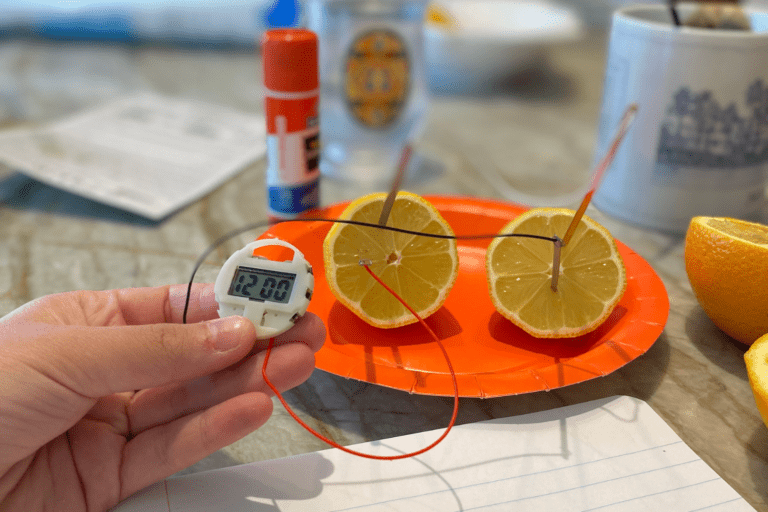Full and Unpaid Review of the OMAX 40X-2500X Digital Lab Trinocular Compound LED Microscope
In the world of scientific research and education, a high-quality microscope is a must-have tool for your classroom or lab. Read on to discover why I think the OMAX 40X-2500X Digital Lab Trinocular Compound LED Microscope is an excellent option for your microscopy needs. With its advanced features, superior optics, digital capabilities, and easy-to-use features, this microscope promises to enhance your students’ observations and provide your learners with detailed images of the tiniest specimens!
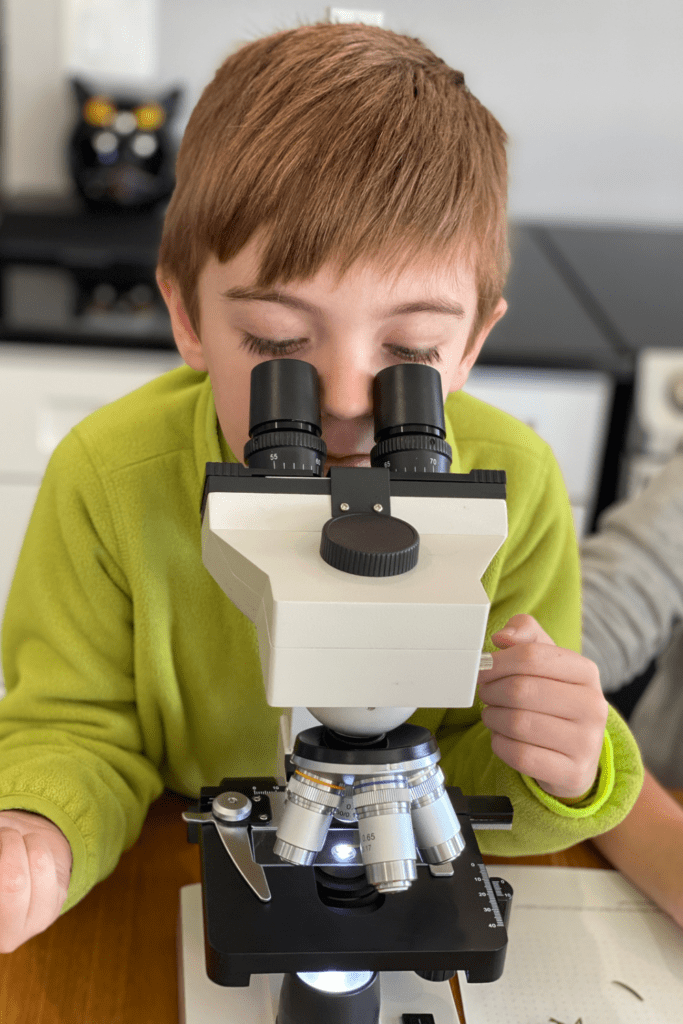
This post contains affiliate links.
When children have access to a microscope, they are able to visualize the vast and amazing microscopic world the exists around them, fueling their curiousity for the natural world. But how do you know which microscope to choose? There are hundreds of different models, each with their own specific features and price tags. The task of finding an affordable, high quality microscope that will serve your learners from elementary through high school can be absolutely daunting.
That’s where I come in. I purchased the OMAX 40X-2500X Digital Lab Trinocular Compound LED Microscope a few years ago and have been testing it out with my kids and their friends! I am thrilled with the features and ease-of-use this scientific tool offers and wanted to write a full, unpaid review in an effort to make your microscope shopping quick and easy.
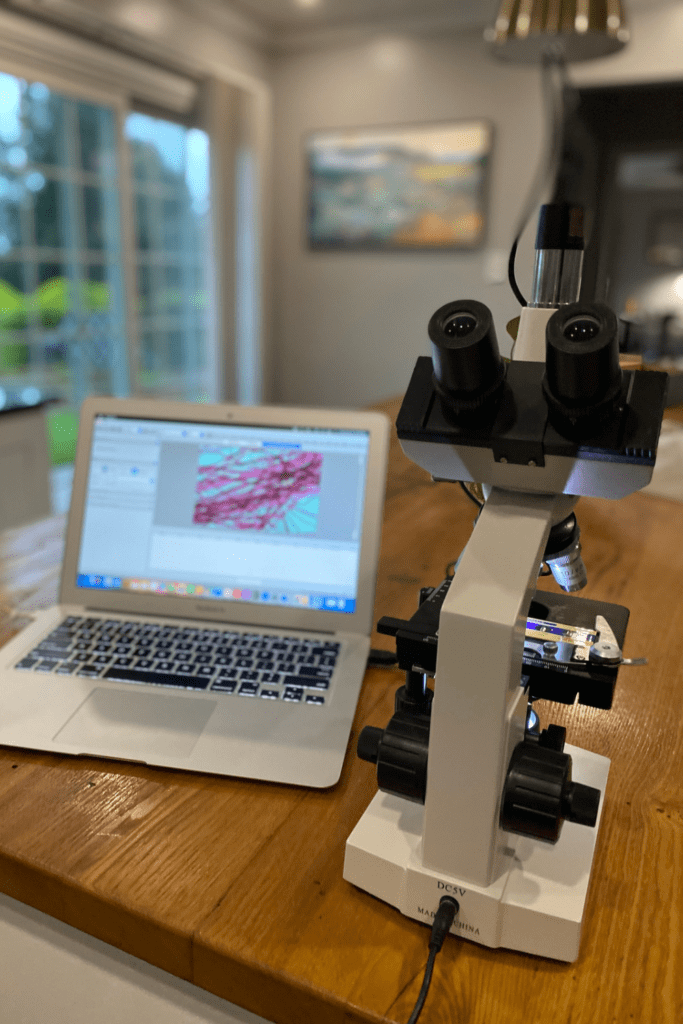

Basic Features and Specifications
Let’s start by walking through the basic features and specifications of this microscope:
Trinocular Design
The OMAX 40X-2500X Digital Lab Trinocular Compound LED Microscope features a trinocular design, which means it has three eyepieces. This allows you to simultaneously use two eyepieces for binocular viewing and attach a camera to the third eyepiece for digital imaging. The trinocular port is ideal for capturing high-quality images and transferring them to your computer for further analysis or documentation.
Magnification Settings
Your OMAX microscope offers a wide range of magnification options, with settings that range from 40X to 2500X. This is achieved through the combination of four objective lenses (4X, 10X, 40X, and 100X) and the choice of 10X or 25X eyepieces. This provides flexibility for various applications and ensures you can observe even the minutest details in your samples.
LED Illumination
The compound microscope is equipped with LED illumination, providing you with a bright and even light source for clear and detailed observation of your specimens. The intensity of the LED light can be adjusted according to your needs, ensuring optimal visualization and minimal light-induced sample damage. The LED’s longevity and low power consumption also contribute to the microscope’s user-friendly and cost-effective nature.
Mechanical Stage
The OMAX 40X-2500X Digital Lab Microscope comes with a mechanical stage, allowing for precise movement and positioning of your samples. The mechanical stage features two control knobs: one for the X-axis and one for the Y-axis, making it easy for you to smoothly move your slides and accurately locate specific areas of interest. This feature is particularly useful when observing specimens at higher magnifications, as it allows for fine adjustments without disrupting your focus.
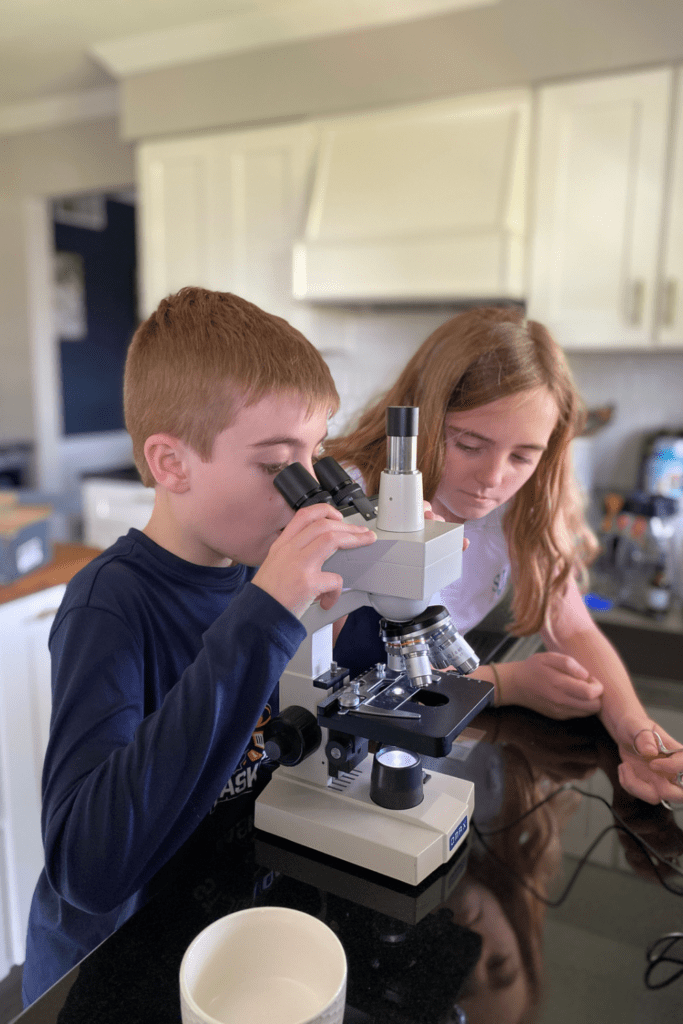

Optical Components
Objective Lenses
Objective lenses are critical components of your OMAX 40X-2500X Digital Lab Trinocular Compound LED Microscope. They magnify the specimen on the microscope stage and are interchangeable, allowing you to choose the appropriate magnification level for your needs. The microscope comes with four high-quality DIN achromatic objectives:
- 4X (Scanning) Objective
- 10X (Low Power) Objective
- 40X (High Power or High Dry) Objective
- 100X (Oil Immersion) Objective
These objectives offer a numerical aperture (NA) range from 0.10 to 1.25, providing clear and sharp images at various magnifications.
Eyepieces
Your microscope comes with a set of eyepieces optimized for comfortable, extended use. The eyepieces feature wide field (WF) design, which reduces eyestrain and provides a broad field of view. Included with the microscope are two sets of eyepieces:
- WF10X Eyepieces
- WF25X Eyepieces
These eyepiece options, combined with the objective lenses, give you a total magnification range of 40X to 2500X.
Condenser
The condenser is a crucial part of the microscope’s optical system as it collects and focuses light on the specimen, enhancing image details. Your OMAX 40X-2500X microscope features an Abbe condenser with an iris diaphragm, enabling precise control over light transmission and helping you achieve the best possible image contrast.
The condenser’s focusing point is adjustable, allowing you to fine-tune the lighting for optimal image clarity. While using higher magnifications, adjusting the condenser becomes increasingly important:
| Objective Lens | Condenser Focusing Point |
|---|---|
| 4X | Position Close to Specimen |
| 10X | Position Slightly Lower |
| 40X | Position Lower |
| 100X | Position Lowest and Add Oil |
In summary, the optical components of the OMAX 40X-2500X Digital Lab Trinocular Compound LED Microscope include high-quality objective lenses, comfortable wide field eyepieces, and an adjustable Abbe condenser that work together to provide clear, detailed images across a broad range of magnifications. Learners of all ages can easily use this microscope to uncover the mysteries of the microscopic world!
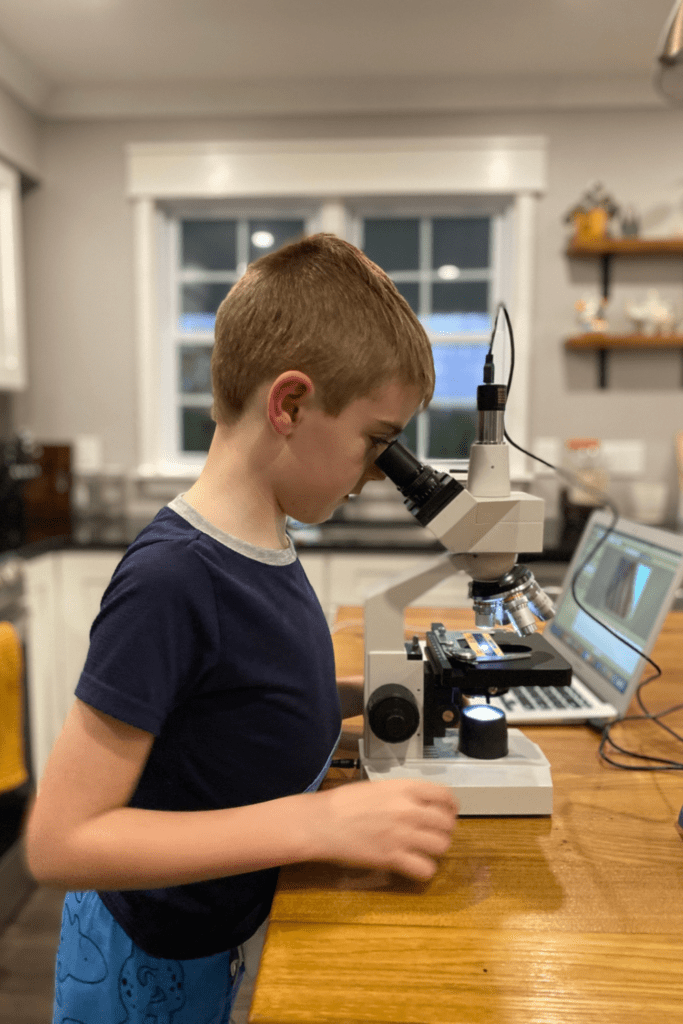

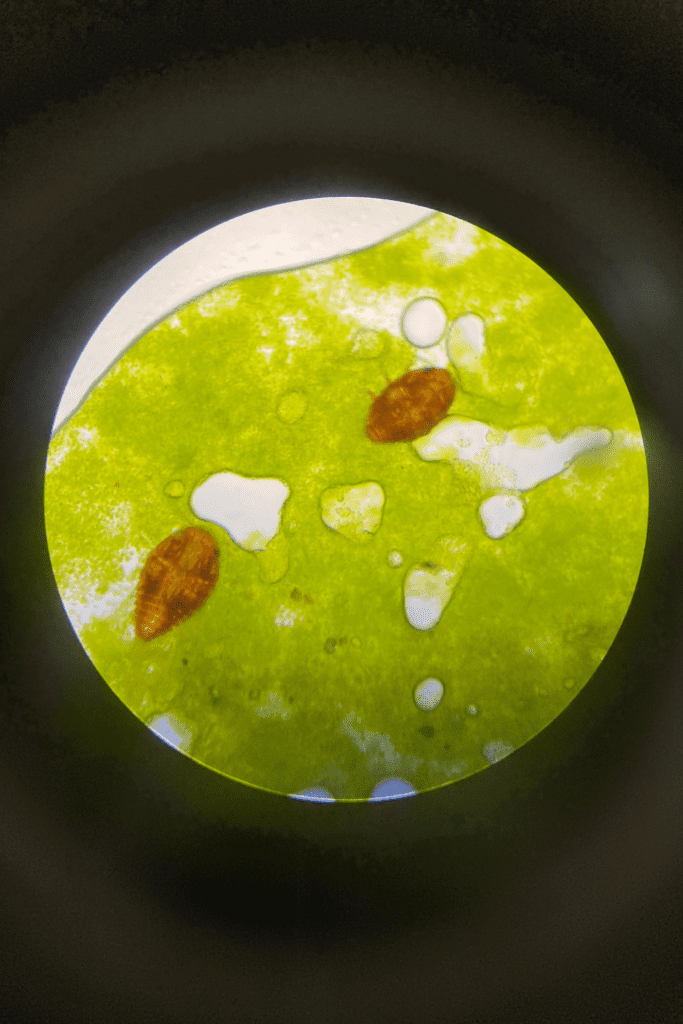

Digital Imaging and Camera
You read that right – this trinocular microscope comes with a digital camera, allowing you and your students to capture your discoveries on camera in still image and video format! Here are the details:
14MP Digital Camera
The OMAX 40X-2500X Digital Lab Trinocular Compound LED Microscope features a 14MP digital camera, delivering sharp and vibrant images. Capture high-resolution stills with ease, and enjoy detailed magnification of your specimens.
USB Connection
Your microscope’s digital camera connects easily to your computer using a USB cable. This means you can quickly begin working with your images and videos, whether you are on a Macbook Pro or a PC.
Video Recording and Scanning
Record videos of your specimens during observation, capturing every detail as you scan the slide. This real-time video capability allows you to observe processes and changes in a dynamic, informative way.
Image and Documentation Software
Included with your microscope comes a powerful software suite for managing your digital files:
- Easily capture and store images, videos, and time-lapse sequences
- Post-processing and measurements of captured images, enhancing your data
- Export images and videos in various formats, facilitating collaboration and documentation
Remember to check compatibility with your computer in terms of operating systems and minimum system requirements to ensure a seamless experience for your young scientists.


Using the OMAX Trinocular Compound LED Microscope
The OMAX 40X-2500X Digital Lab Trinocular Compound LED Microscope is an ideal tool for any educational setting. It provides students with hands-on experience in microscopy, promoting a deeper understanding of biological concepts. The features offered by this microscope include:
- Wide range of magnification levels
- Consistent LED illumination
- Comfortable eyepiece design
- Digital camera compatibility
These features enable you and your students to explore various specimens with enhanced detail and clarity. Moreover, the durable construction ensures the microscope can withstand the demands of frequent usage in an active educational environment!
Ease of Use
The OMAX 40X-2500X Digital Lab Trinocular Compound LED Microscope is designed with user experience in mind. The controls are clearly labeled and easy to access in order to enable a smooth operation. Here are some features that contribute to its ease of use:
- Trinocular head allows for comfortable viewing and simultaneous digital imaging
- A wide range of magnification options, from 40X to 2500X, accommodates various applications
- Adjustable interpupillary distance (45mm-75mm) for comfortable viewing
Illumination and Focus Control
Proper illumination and focus are essential to obtain clear and detailed images. The OMAX microscope offers the following features:
- Bright and even LED illumination with variable intensity control
- Abbe condenser to optimize light distribution and contrast
- Coaxial coarse and fine focusing knobs for precise adjustments
- A smooth and reliable focusing system to maintain image clarity
Build Quality
A microscope’s build quality directly affects its durability and performance. The OMAX 40X-2500X Digital Lab Trinocular Compound LED Microscope is made with:
- A sturdy metal frame to support the weight of the microscope and guarantee stability
- High-quality optics, designed to provide sharp and clear images
- A well-built mechanical stage to hold the sample in place and allow smooth movement
In summary, the OMAX 40X-2500X Digital Lab Trinocular Compound LED Microscope offers excellent quality, user-friendly features, and reliable performance, standing up to heavy use by many small hands!
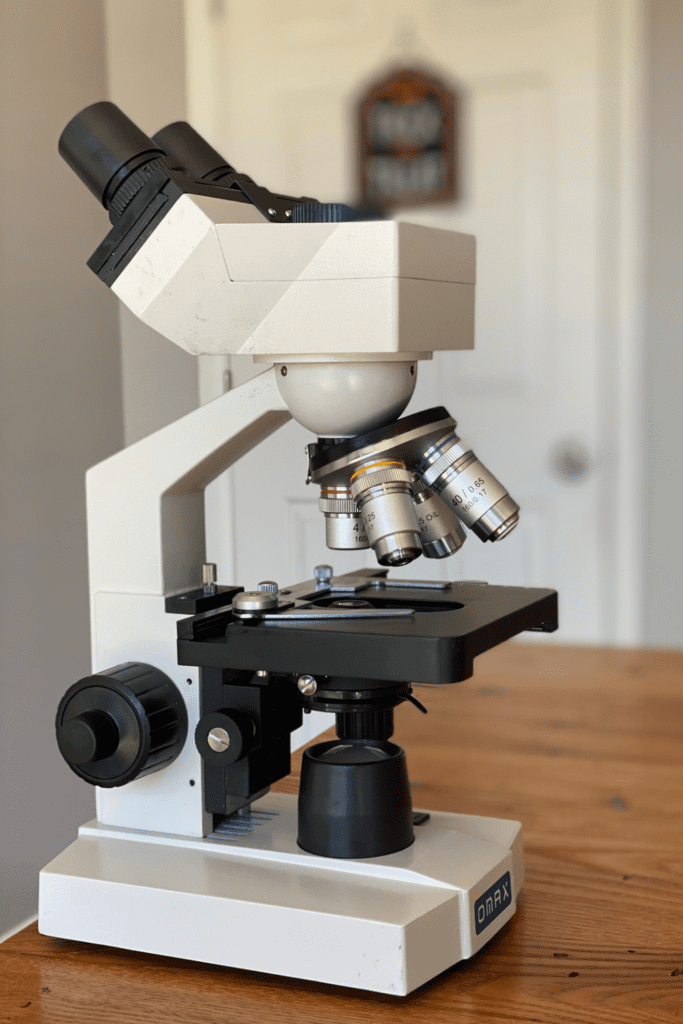

Additional Information about the OMAX Trinocular Compound LED Microscope
Power Supply
The OMAX 40X-2500X Digital Lab Trinocular Compound LED Microscope comes with a 110V-240V multi-voltage power supply. This means you can use it in various countries without the need for a voltage converter. Just ensure you have the appropriate plug adapter if necessary.
Compatibility with MacBook Pro
While the microscope does have a USB connection for image capture, it is essential to take note of its compatibility with different devices:
- The OMAX microscope is compatible with Windows XP, Vista, 7, 8, and 10 operating systems.
- For MacBook Pro users, it is compatible with Mac OS X 10.6 and later versions up to 10.15 (Catalina).


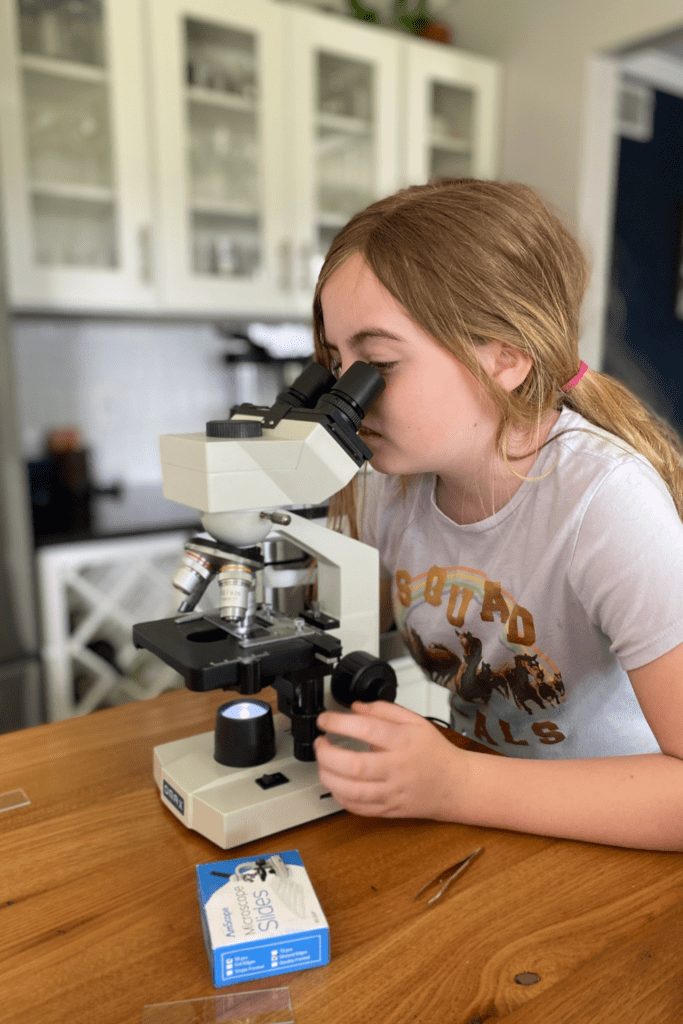

Educational Benefits of Using a Microscope
Providing children with access to a microscope offers a myriad of educational benefits:
Exploration and Observation
Microscopes provide children with an opportunity to explore and observe the world at a microscopic level. They can examine various specimens such as cells, microorganisms, and small plant or animal structures. This hands-on experience fosters curiosity and a deeper understanding of the natural world.
Scientific Inquiry
Using a microscope encourages the development of scientific inquiry skills. Kids can learn to ask questions, formulate hypotheses, design experiments, and draw conclusions based on their observations. This process cultivates critical thinking, problem-solving, and analytical skills.
Visual and Spatial Skills
Microscopy requires children to focus on tiny details and make precise observations. It enhances their visual perception and spatial awareness as they learn to interpret complex images and navigate the microscope’s controls. These skills are valuable in various scientific and technical fields.
Introduction to STEM Fields
Microscopy is closely associated with science, technology, engineering, and mathematics (STEM) disciplines. By using microscopes, children can gain exposure to these fields and develop an interest in pursuing careers in biology, medicine, research, or related scientific fields. It can also help dispel misconceptions and demystify science.
Understanding Cellular Structure
Microscopes allow children to see the building blocks of life—cells. They can explore the different types of cells, their structures, and their functions. This knowledge forms the foundation for understanding biology, anatomy, and physiology, providing a context for advanced concepts later in their educational journey.
Attention to Detail and Patience
Microscopy requires patience and attention to detail. Children learn to be meticulous, careful, and precise in their observations and experiments. This focus on detail can be applied to other areas of their education and daily life, improving their overall attention skills.
Technology Familiarity
Microscopes have evolved alongside technology. Modern microscopes may include digital features, allowing children to capture images or record videos of their observations. By engaging with these tools, children become familiar with digital technologies and develop digital literacy.
Cultivating a Scientific Mindset
Microscopy encourages children to think like scientists, encouraging them to embrace curiosity, exploration, and experimentation. It promotes a scientific mindset characterized by questioning, investigating, and seeking evidence-based explanations. These attributes are valuable not only in science but also in other areas of learning and problem-solving.
As you can see, the use of microscopes in education provides an engaging and hands-on approach to learning, fostering scientific curiosity, critical thinking, and a deeper understanding of the natural world. I am so thrilled my family invested in the OMAX 40X-2500X Digital Lab Trinocular Compound LED Microscope, as it has brought countless opportunities for scientific learning to our home.



